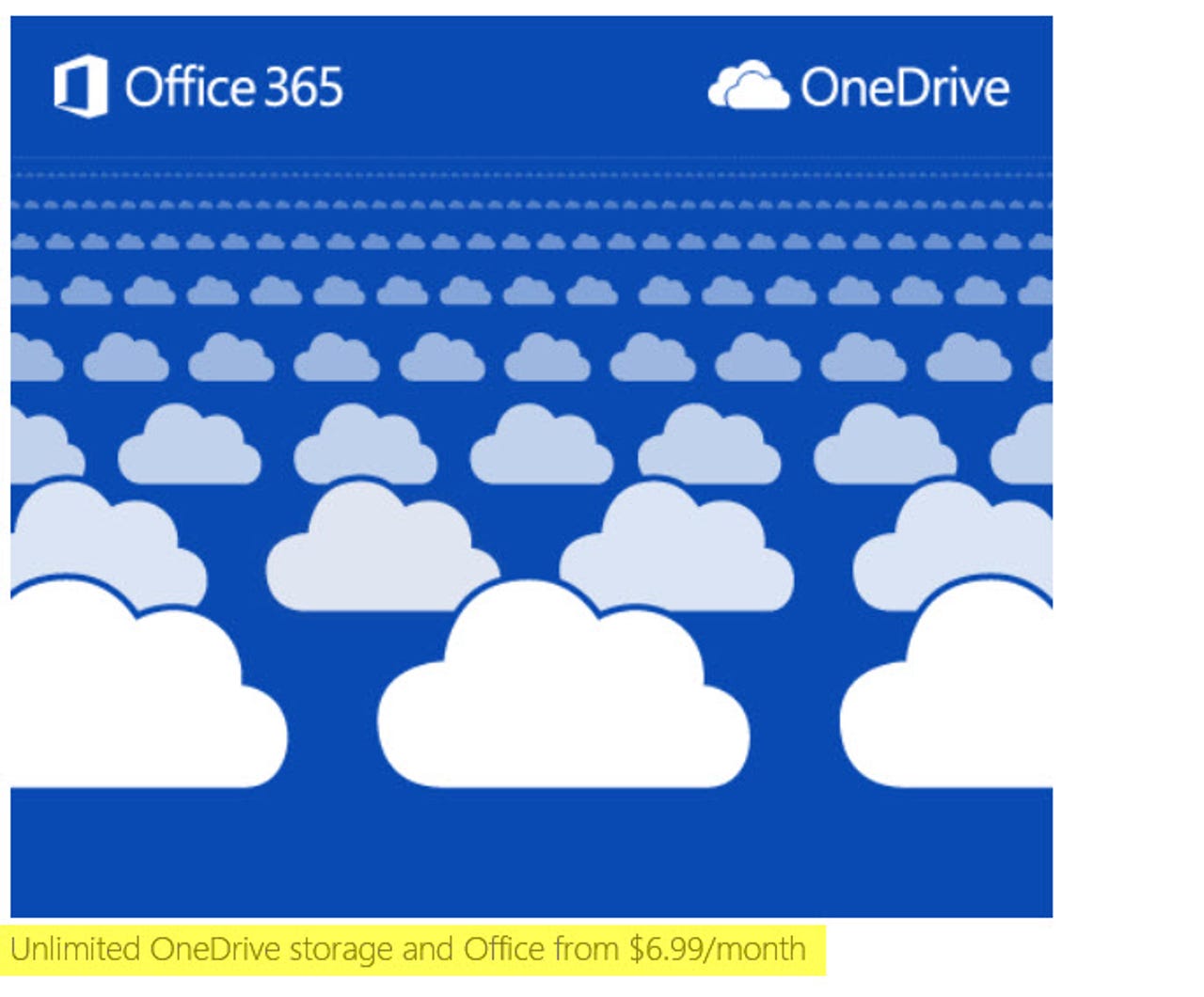Ed Bott's Weekly Wrap: Good Microsoft, Bad Microsoft edition

For anyone who covers Microsoft products and services, this week was nuts.
Goodbye, Windows 7 PCs
At the beginning of the week, we learned that Microsoft had quietly updated its Windows Lifecycle Fact Sheet page, adding October 31, 2016 as the last date on which manufacturers can sell PCs with Windows 7 preinstalled. If you're curious, here's what it means for consumers and business buyers.
But a few hours later came...
The OneDrive Monday Night Massacre
I cannot even conceive why some highly paid Microsoft executive felt compelled to wait until just before midnight Eastern time on Monday to post a poorly drafted, tone deaf, unsigned post delivering some bombshell news about its OneDrive consumer service.
But there it was. The year-old promise of "unlimited storage" for every Office 365 Personal, Home, and University subscriber is null and void.

Oh, and all of Microsoft's free cloud storage plans are getting a haircut too. Here are the details:
Microsoft reneges on 'unlimited' OneDrive storage promise for Office 365 subscribers
If you advertise "unlimited" cloud storage, perhaps you should expect that some people will take you at your word and move large collections to the storage space you so generously offered? Did no one consider the possibility that some customers with large digital media collections would find this offer insanely attractive?
Apparently not. Or at least no one with access to an Excel spreadsheet was able to calculate the costs from those heavy users. (The owners of "all you can eat" buffets could easily have told them what was in store.)
What's bizarre about this clumsy news dump is a) that it took so long and b) that it was executed with such staggering disregard for consumers.
I can at least clear up one bit of gratuitous confusion Microsoft threw into that blog post. How did the company know what's in the OneDrive collections of its heaviest users? Is it actually snooping into people's private files?
Nope.
Part of Microsoft's description was based on aggregate statistics, with a simple database query: How many files of each type are stored in the OneDrive folders of the top 1000 users? How much space do those files take up?
No privacy violation, no personally identifiable information, no file names or contents, just some pie charts.
And on top of that, I'm told, Microsoft called some of those users and interviewed them about the service they seemed to be enjoying very much. Which is actually a kind of customer-centric thing to do, and maybe someone could have, you know, mentioned that in the blog post announcing these cutbacks?
Ahem.
There's an online petition movement aimed at getting Microsoft to roll back some or all of its OneDrive changes. I hear that's not gonna happen.
Happy November! Time for a big Windows 10 update!
Microsoft delivered Windows 10 build 10586 to its Windows Insider group this week.
And yes, it is virtually certain this is the same build that will reach the general public soon.
The name of the update file, th2_release, is certainly one clue. The Insider Preview label has been stripped from the About screens, and there's no longer an Evaluation Copy watermark on the desktop.
Microsoft appears to be following a schedule similar to the one it used for the initial release of Windows 10. Back in July, Windows Insider program participants received build 10240, the final release, about two weeks ahead of the general public. That strongly suggests this update will be available for the public well before Black Friday.
There's even a new version numbering scheme.
Here are the results from the Winver command for the Current Branch of Windows 10, released on July 29, 2015.
And here's what you get from the same command on build 10586:
Spot the difference in the version line?
Calling this release Version 1511 (two digits for the year, two digits for the month, yymm) is prosaic but easy to understand. No more Service Packs or Feature Updates or other excess verbiage tacked onto product names, just a number.
(As an aside: That numbering scheme will eventually cause a Y2.1K problem, if Windows can survive till the end of the century. What were they thinking?)
If Microsoft releases its big Redstone update next July, that would be version 1607, which will probably be supplanted by version 1611 in the fall, and so on.
I'm in the process of installing the new build on a handful of test systems here and will have more to share as I dig in.
See you next week.